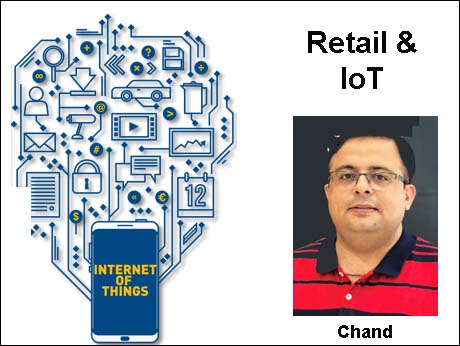
By Chand, Manager, IT Integration Web-Methods, Lowe’s India
August 3 2018: Everyday physical objects are becoming uniquely identifiable and embedded with the ability to connect to other devices or networks.
The Internet of Things (IoT) in true essence is the inter-networking of physical devices, vehicles (also referred as “connected devices” and “smart devices”), buildings and other items—embedded with electronics, software, sensors, actuators, and network connectivity that enable these objects to collect and exchange data.
Together with other disruptors, IoT will fundamentally reshape the industry in coming years and the impact would be relatively significant. IoT comes to life when its multiple building blocks simultaneously operate and communicate with each other.
IoT is driving innovation and new opportunities by bringing every object, consumer and activity into the digital realm. At the same time, leading businesses are making similar changes within their enterprises by digitizing every employee, process, product and service.
IoT will be particularly disruptive to the retail industry.
Some retailers are taking further advantage of the wide array of connected products by becoming an integration “platform.” The concept behind these platforms is to make it easier for customers to make all of their in-home devices talk to one another.
It’s important for retailers to consider taking steps now to lay a foundation for IoT and better ecosystem in some major areas. The biggest challenge is the rapid evolution of the scope and variety of technologies which can be used in the connected ecosystems. In retail specifically, the biggest and immediate challenge for companies to overcome is managing, analysing and acting on the reams of data pouring in from all connected devices.
The time to unleash IoT is now. It is the first step to transform your store for 21st century retail. It addresses one of your most pressing challenges – how to provide a personal, seamless and differentiated experience for customers who do not think in terms of channel? Retailers that take the lead in this space stand to gain an important advantage in an already competitive environment. Early adopters will be positioned to quickly deliver IoT enabled capabilities that can increase revenue, reduce costs and drive a differentiated brand experience.
Our own thinking on this continues to evolve and we expect to witness additional perspectives further. One thing is however clear – to truly build value from IoT investments, retailers need to be expansive in their thinking, consider innovative applications and use supporting technologies such as augmented intelligence.|
Chand is a part of the IT Engineering (Integrations) team at global homke improvement company, Lowe’s. He has an extensive experience of leading and managing large scale integration development and maintenance projects, and believes that people are the greatest assets in an organisation.